SUMMARY
This is AI generated summarization, which may have errors. For context, always refer to the full article.
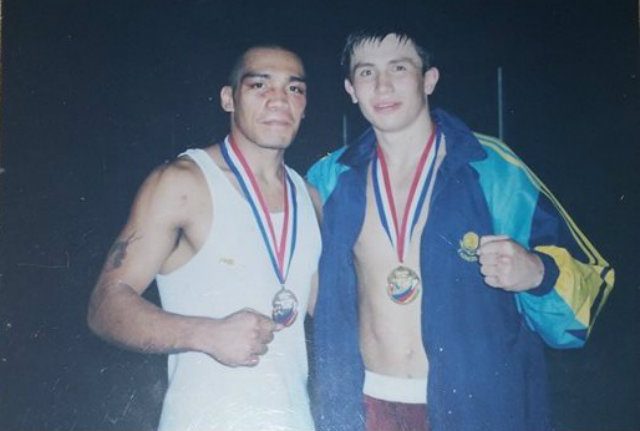
MANILA, Philippines – While boxing fans fill up Las Vegas in anticipation of the biggest fight of the year, this weekend’s middleweight championship fight between Gennady Golovkin and Saul “Canelo” Alvarez, Christopher Camat is 400 miles to the west at home with his family in Los Osos, California.
He’s a family man these days, a finance manager at a car dealership in Arizona, many years removed from his own exploits in the ring. And like most people with an interest in the sport, he’ll be having a family get-together to watch the fight on pay-per-view.
“I feel like Triple G, once he maintains his distance, he’ll get the W or even a knockout,” he says, figuring the fight will be finished between the 7th and 9th rounds. “Every punch that guy lands hurts.” He doesn’t need anyone to reaffirm that for him. He knows from first-hand experience.
“Do people ever approach you and say ‘Hey, aren’t you that boxer from the 2004 Olympics?’” this writer asked over the phone from Manila.
“Yeah, that happens more before,” Camat replies, his voice trailing off a bit. “Now people forget.”
But Camat never forgot, not about the time he represented his birth nation the Philippines in Athens, Greece, or about his fierce battles with the US immigration system that earned him the opportunity to fight abroad, or about the time he shared a ring with the man who defends his WBC, IBF and WBA middleweight titles this Saturday, September 16 (Sunday, September 17 in Manila), at the T-Mobile Arena.
Gennady Gennadyevich Golovkin.
“I feel pretty proud that at one time I was at his caliber,” says Camat, now 38, a native of Binalonan, Pangasinan, Philippines.
Thirteen years ago, in January of 2004, Camat was in the gold medal match of the Asian Championships in Puerto Princesa, Palawan, having defeated India and Pakistan, then defeated Japan’s Koji Sato (“a heavy hitter”) to assure himself of a spot in the Olympics.
“And then the fourth fight was with Triple G. I’d been following him the year before that because he was world champion the year before that, and it’s like dammit, I didn’t care, I gave it all my best,” Camat remembers.
By that time, the week-long competition had begun to wear on him. His shoulder had been hurting him, he had bruises all over his face, and staring across from a fresh Golovkin who had been knocking out everyone that week in Puerto Princesa.
“I think that I beat him the first round, second round he got more accurate because I was pretty much done,” said Camat. “I was still fighting out, I was still in front of him, making him miss sometimes and countering, I wish you could see the video.
“The third round, he caught me with the straight hand when the referee said stop and he came at me after, I wasn’t expecting a punch, he caught me with a straight hand. I went down and then coach Pat Gaspi threw in the towel.”
Camat still remembers when he first arrived in America with his mother and two sisters. It was 1990, he was 10 years old and spoke no English.
“I was an ignorant kid, you know. Tall buildings and lots of cars,” Camat says of his first impression of America. “I knew as a kid I can be somebody that can be in the books.”
His father Eduardo had come earlier and petitioned them, but had stated incorrectly that he was single on his application. His father was deported the following year, and the constant fear of deportation hung over the family’s head.
Despite lacking legal status, he was able to attend school and live an otherwise normal life thanks to federal laws prohibiting banning a child from school based on his immigration situation.
At age 13 Camat began noticing his friends, Dennis Sagrado and Armando Garil, were no longer hanging out at the basketball courts during weekdays. They told him they were now into boxing, and brought him to watch at their gym in San Jose.
“The coach said ‘If you have time to watch then you have time to hit the heavy bag,’” Camat remembers. “So it started there.”
Camat would sometimes walk 11 miles, 5 days a week to the gym to learn the sport. And it soon paid off as the southpaw began racking up local titles, and made it to the junior nationals, where he placed as high as the silver medal.
“He has the punching power and smartness of De La Hoya,” Joe Wallace, a San Jose based trainer, told the San Francisco Chonicle in 2000.
He was close to representing the US internationally and earning a scholarship to Northern Michigan University. But by the time he was 18, his lack of a green card halted him from taking his career further.
By 1998 he and his family had lost an appeal and were ordered to be deported. The case became highly publicized through reports in the San Francisco Chronicle – he was a DREAMer years before President Barack Obama instituted the Deferred Action for Childhood Arrivals. The case caught the attention of a San Francisco-based immigration attorney named Amancio “Jojo” Liangco Jr, who was able to help Camat and his two sisters obtain legal status (his mother’s case was unsuccessful).
Not only was Liangco able to help Camat get legal status, he also helped raise funds to send him to the 2000 Olympic qualifiers in Bangkok, Thailand. Competing as a junior middleweight, Camat stopped his Chinese foe but lost a decision to an Uzbekistan opponent in his next fight. He had to finish in the top two to make it to the Sydney Games, but settled for the bronze.
Camat continued his international duty for the Philippines, earning a bronze at the 2003 Southeast Asian Games, and had a disappointing stint at the 2002 Asian Games in Busan, South Korea,
“Even Chino Trinidad and Recah Trinidad were cussing on TV,” Camat says of his 18-11 loss to Pakistan. “The guy was getting countered, getting pummeled, he probably landed at most 6 or 7 punches on me the whole fight.” Camat had left behind his job working in a furniture showroom for the Asian Games; he left Korea disgusted at the politics of boxing.
“He is a power puncher but [he’s a] slow boxer,” said national team head coach Nolito Velasco. “At his time, a lot of Asian boxers [were] very strong.”
Being an American-based athlete representing the Philippines brought with it an elevated level of pressure to perform, Camat admits. But those were some of the best times of his life, he says.
“I miss those days,” Camat says, reminiscing of his days as an international boxer. “You walk around Olympic Village, you made it there, it’s a dream come true.”
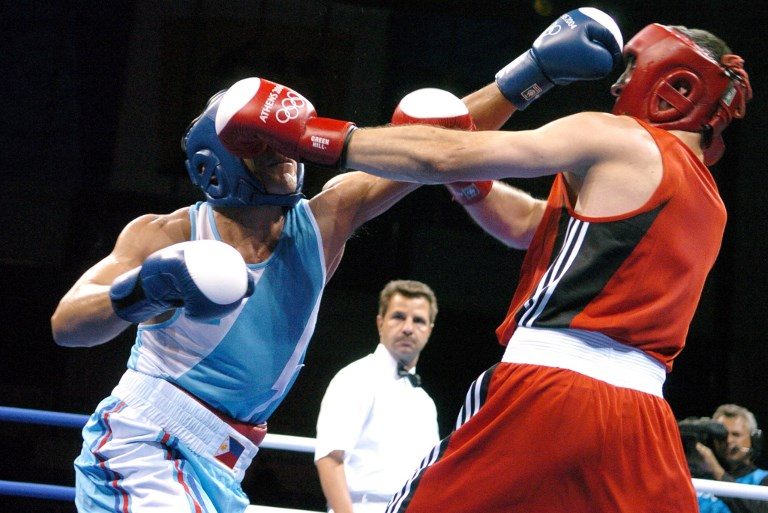
Camat was one of 4 boxers the Philippines had sent to the Athens Games in 2004. He was initially picked to be the flag-bearer at the opening ceremony but passed on the opportunity to focus on his first fight. Romeo Brin, a 3-time Olympic boxer and current national team coach, got the honor instead.
Camat drew the silver medalist from 2000, Gaydarbek Gaydarbekov of Russia, in his opening bout, and though he says the judges didn’t give him enough credit for his own punches, he conceded a 35-13 decision loss.
Gaydarbekov eventually won the gold medal, defeating Golovkin in the final. In an interesting twist, both Camat and Golovkin last lost to Gaydarbekov.
“If I was able to place something, get a medal, it would be nice to kind of make it into pro,” said Camat. “I was a little bit discouraged but at the same time I just wanted to make it into the Olympics.”
He never fought again after Athens, and his priorities have now shifted to his 4 children and his wife Sherrie. He says he lost his first marriage due to his constant travels as a boxer. “Now I’m remarried, I want to be a father and provide and just be a family man now,” Camat says.
This weekend, when Golovkin and Canelo meet at center ring, Camat will be content to watch on TV as a fan. He has more important things to fight for now. – Rappler.com
Add a comment
How does this make you feel?
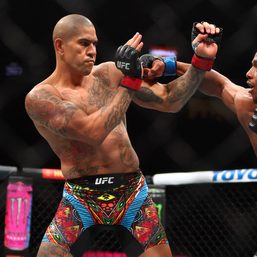
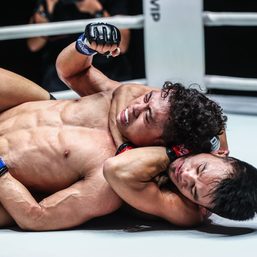
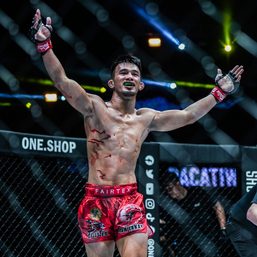
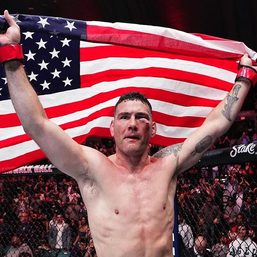
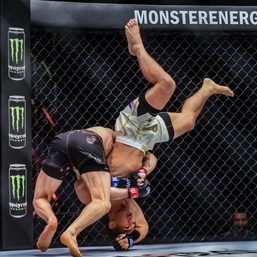
There are no comments yet. Add your comment to start the conversation.